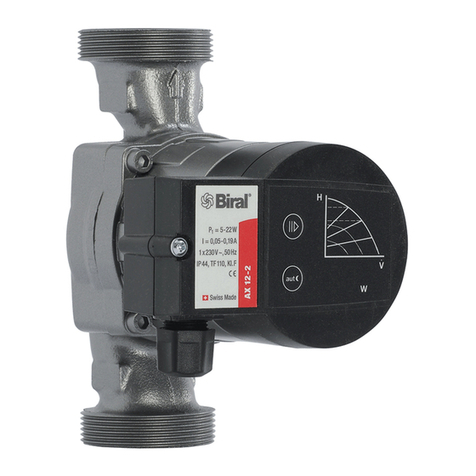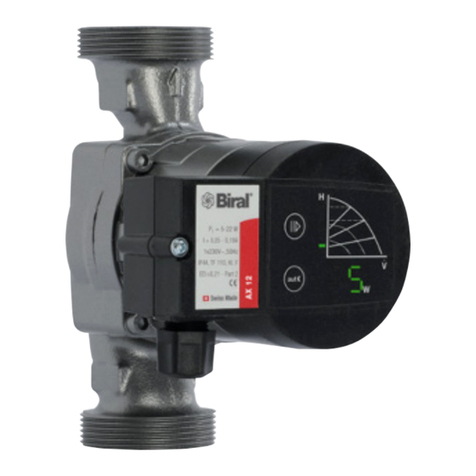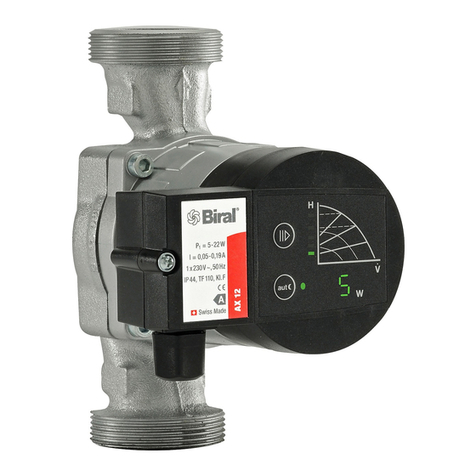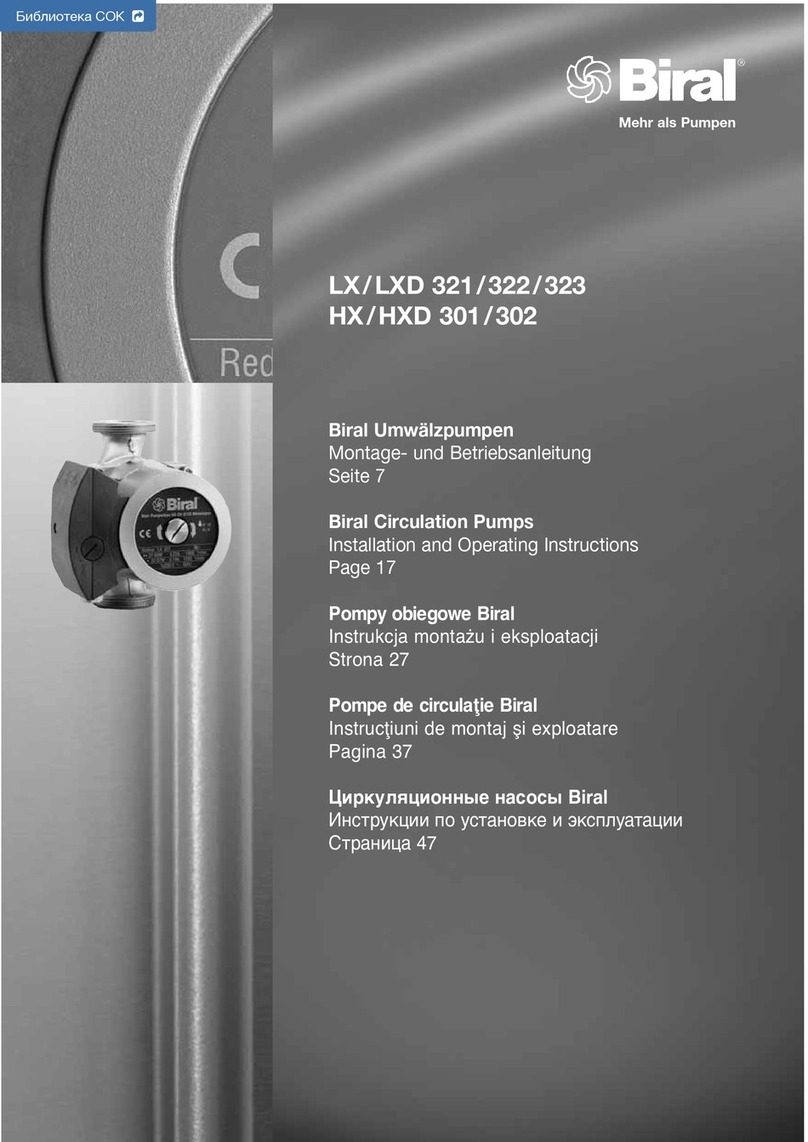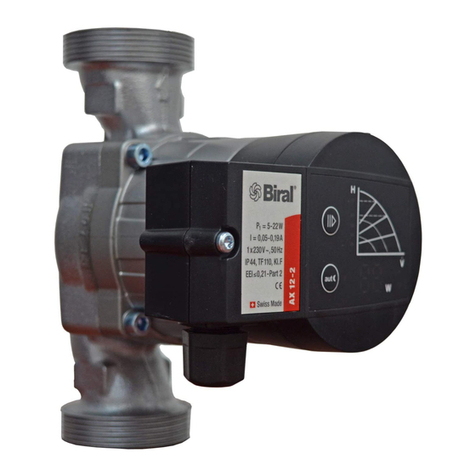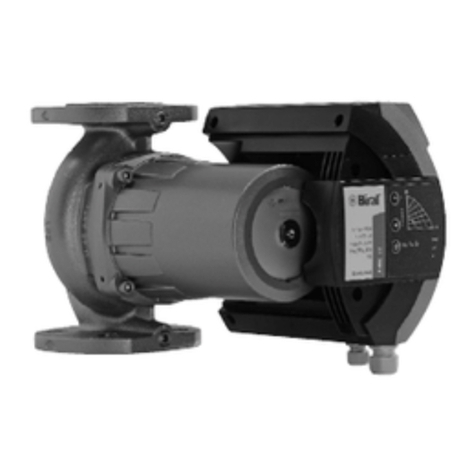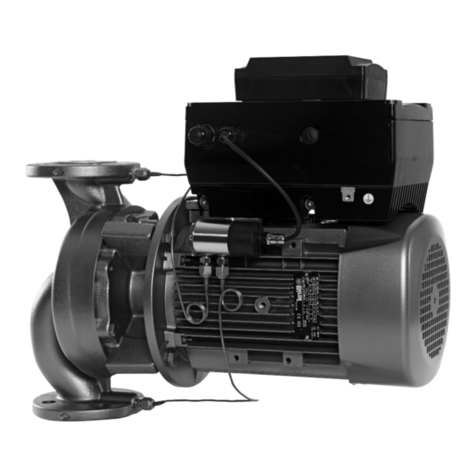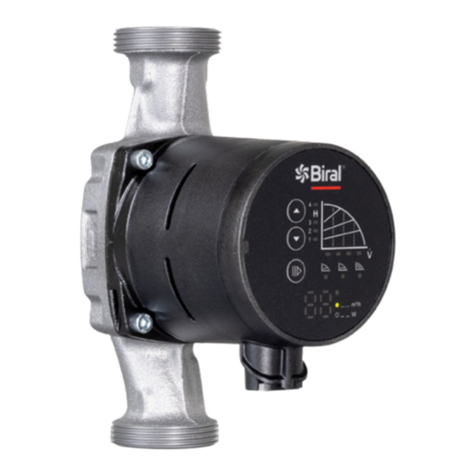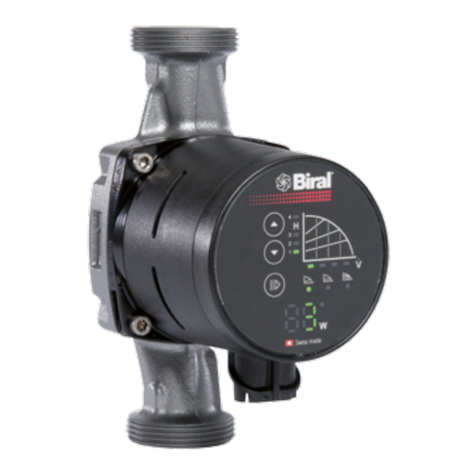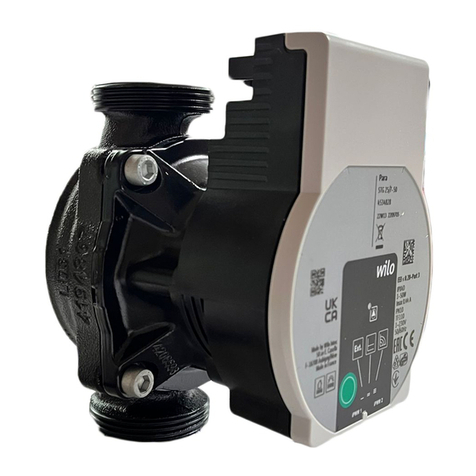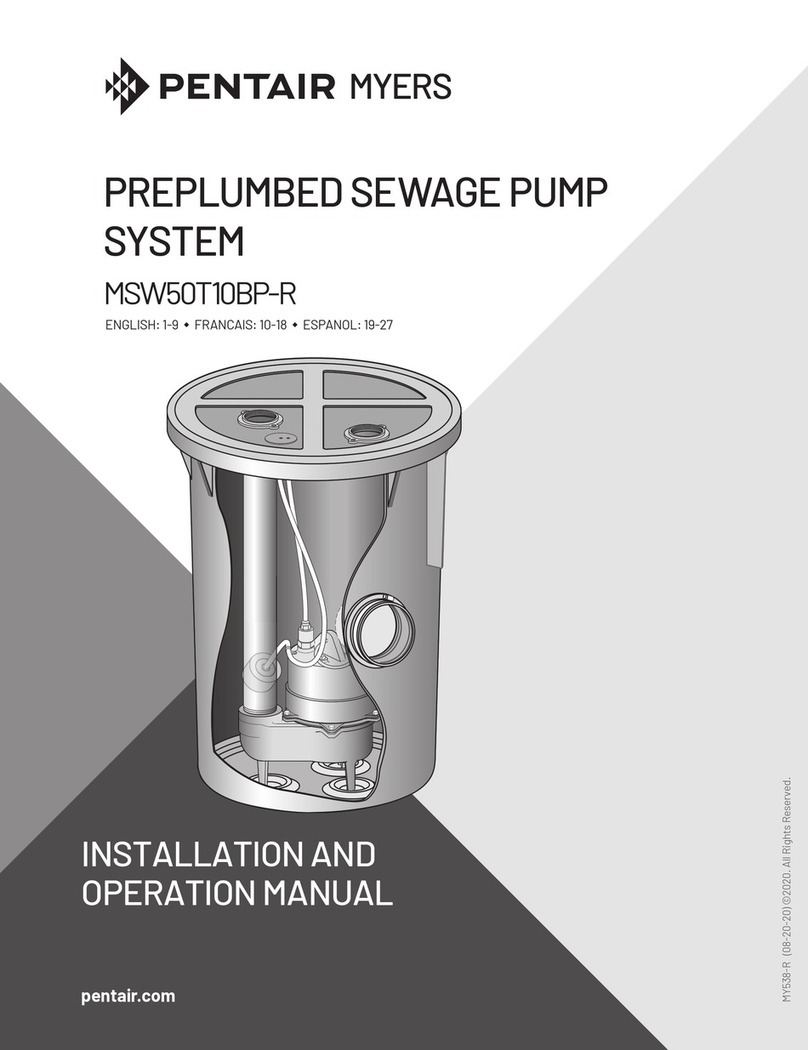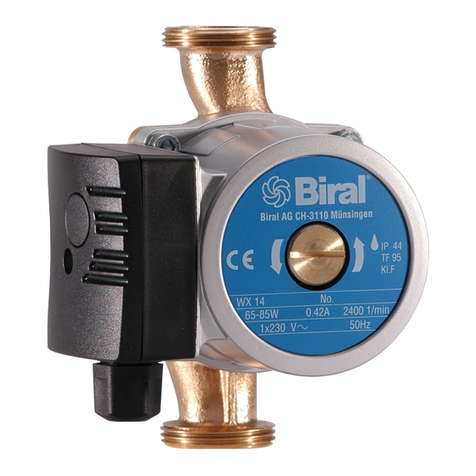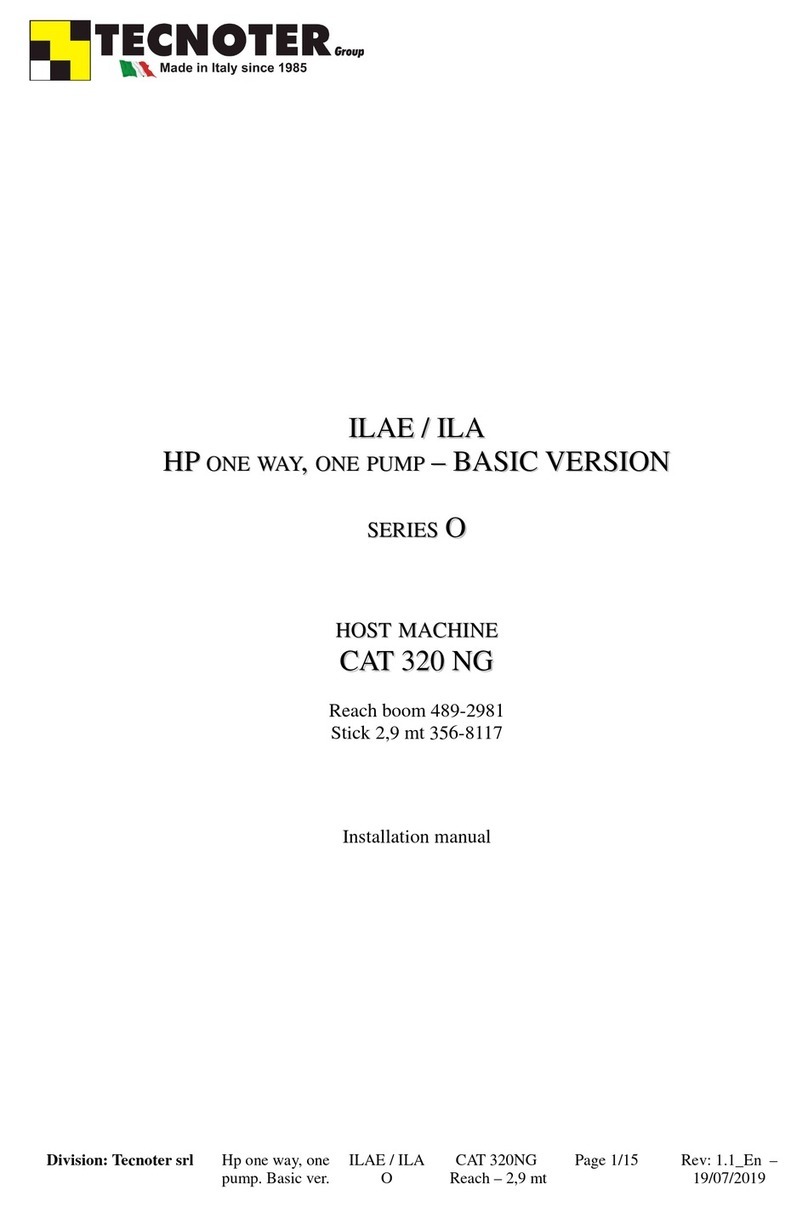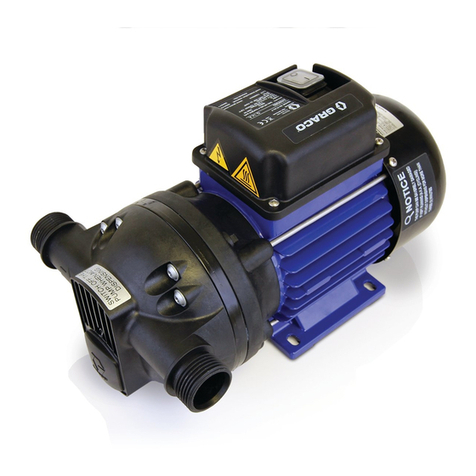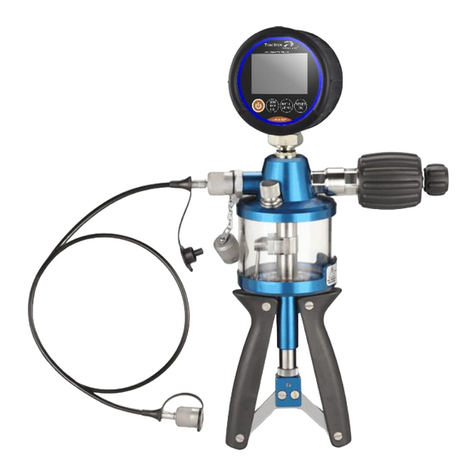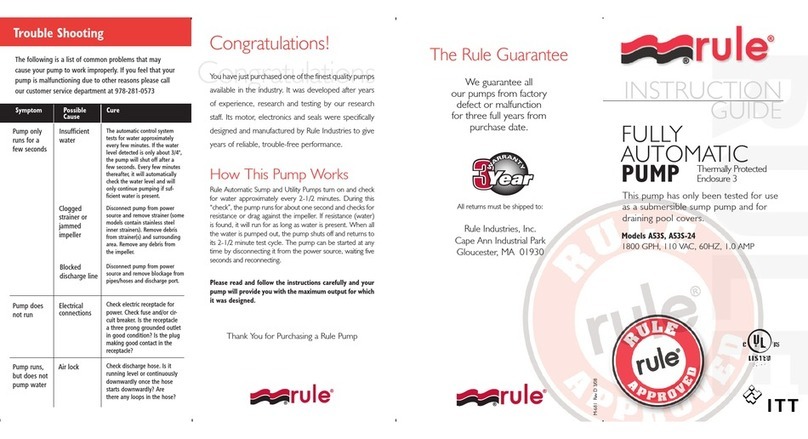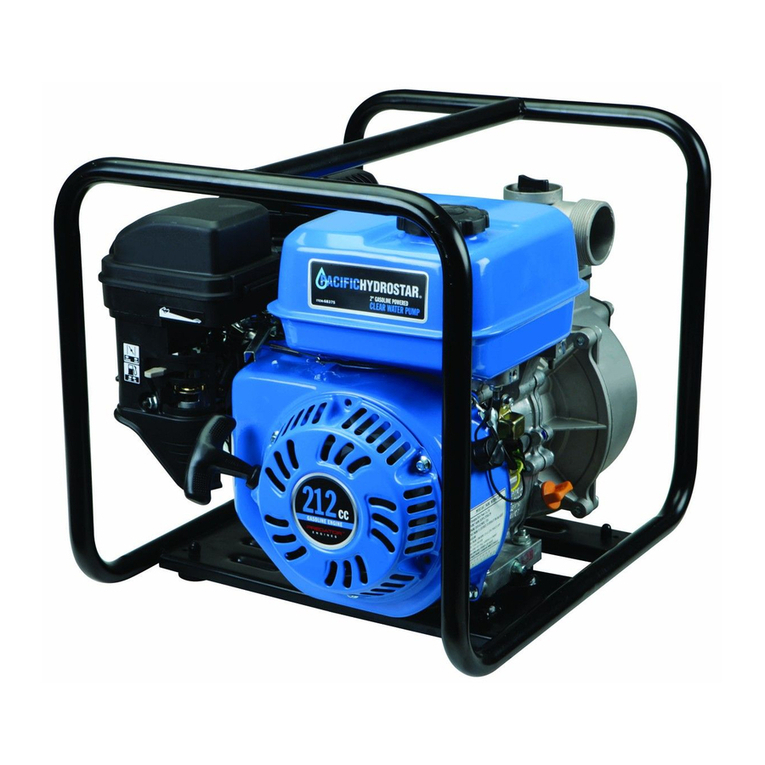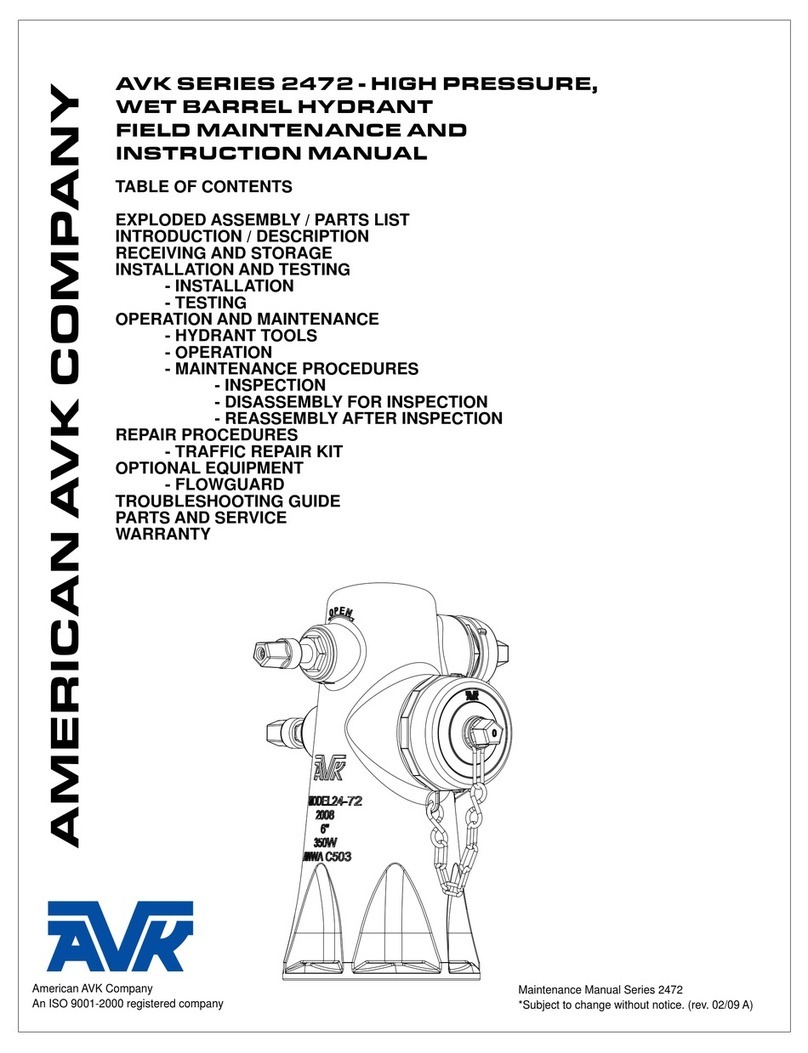
NT
5
VM 460.0002 GB/07.00 –Ident–Nr. 550 088
3.3 Preservation / Storage of centrifugal pumps
3.3.1 Preservation
In the case of storage or prolonged standstill, the
pumps must be protected against corrosion. In those
cases, an outside and inside preservation is to be pro-
vided. The durability of the protection against corro-
sion, which is limited in time, depends on the composi-
tion of the preservative to be applied and the storage
conditions. Under normal circumstances the pumps
have no special preservative.
At an additional charge we can, however, supply
pumps and replacement parts ex factory with a preser-
vative adequate to the planned storage period.
3.3.1.1 Outside preservation
The outside preservative should be applied by painting
or spraying with a spray gun.
Points of preservation:
All bright and unvarnished parts (e.g. shaft ends, cou-
plings, flange facings, valve and manometer connec-
tions).
3.3.1.2 Inside preservation
(Not required for pumps made of stainless materials.)
Internal preservation is applied by painting, spraying
using spray guns, filling/dipping and subsequent drain-
ing. Finally, the suction and outlet branches as well as
all other supply and discharge branches must be
sealed with dummy flanges or dummy plugs (plastic
caps).
Points of preservation:
All bright parts inside the pump (e.g. pump casing in-
side, bearing bracket, shafts, impellers and diffusers).
3.3.1.3 Storage times
Depending on the required storage period and the sur-
roundings, we recommend the use of preservatives
from Valvoline GmbH, Hamburg.
Storage in a closed, dry and dust–free room
Storage time up to 6 months up to 12 months over 12 months À
Internal preserrvation Tectyl 511 M Tectyl 511 M Tectyl 506 EH
External preservation Tectyl 511 M Tectyl 511 M Tectyl 506 EH
Storage in the open–air, central European climate
Storage time up to 6 months up to 12 months over 12 months
Internal preservation Tectyl 542 Tectyl 542 Tectyl 506 EH
External preservation Tectyl 542 Tectyl 506 EH Tectyl 506 EH
Storage in the open–air, tropical climate, aggressive industrial air or
proximity to the sea
Storage time up to 6 months up to 12 months over 12 months Â
Intermal preservation Tectyl 542 Tectyl 542 Tectyl 506 EH
External preservation Tectyl 506 EH Tectyl 506 EH Tectyl 506 EH
ÀInternal and external preservation must be renewed after 48 months at the latest.
ÁExternal preservation must be renewed after 18 months at the latest.
Internal preservation must be renewed after 48 months at the latest.
ÂExternal preservation must be renewed after 12 months at the latest.
Internal preservation must be renewed after 48 months at the latest.
Note: The preservatives listed are to be regarded as a
recommendation. Alternatively, technically equivalent
products from other manufacturers can be used.
When handling preservatives, the safety hints con-
tained in the relevant DIN safety data sheets and those
of the manufacturer must be complied with.
3.3.1.4 Depreservation
Prior to setting the pump in motion, the inside preserva-
tion must be removed.
Environmentally compatible disposal must be en-
sured.
Preservatives can be removed with wax solvents, pe-
troleum ether, diesel, petroleum or alkaline cleaners.
However, the simplest method is to use a steam clean-
er.
Recommendation for Tectyl 506 EH: Allow petro-
leum ether to act for 10 minutes before any further ac-
tion.
Pumps that are used in the food or drinking water sector
must be dismantled and thoroughly cleaned prior to de-
preservation.
A suitable solvent that is compatible with the liquid to be
pumped (drinking water/food) can be used as the
cleaning agent, e.g. Spiritus, Ritzol 155 or suds with a
high alkaline content. Steam cleaning is ideal.
After a prolonged storage period (more
than 6 months), all elastomers (O–rings,
shaft seals) must be checked for elasticity of shape.
Embrittled elastomers must be replaced. EP rubber
elastomers (EPDM) must be replaced on principle.
3.3.2 Storage
During storage of the pump, the suction and outlet
branches and all other supply and discharge branches
must always be closed with dummy flanges or dummy
plugs.
Storage should be in a dry, dust–free room. During stor-
age, the pump should be cranked at least once a
month. During this process, parts such as the shaft and
bearings should change their position.
3.3.3 Monitoring of the preservation status
The preservation status should be checked at regular
intervals.
The preserved areas must be inspected every 6
months and re–treated, if necessary.
We cannot accept any liability for defects
that arise due to incorrect preservation
treatment.
3.3.3.1 Monitoring of preservation
The preservation must be checked at regular intervals.
The preserved areas must be inspected every 6
months and re–treated, if necessary.
We cannot accept any liability for defects
that arise due to incorrect preservation
treatment.




















